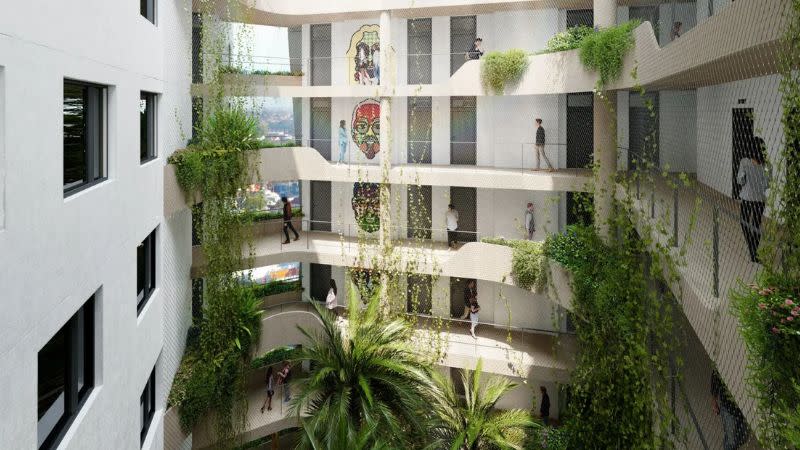
Health and wellbeing has never been more important in a post-pandemic world, and it should change the way we build student accommodation, according to Group GSA.
The architecture and design studio recently won a design excellence competition by new entrant student living developer Linkcity to deliver a 560-bed project in Newcastle.
Group GSA owner Lisa-Maree Carrigan, who will present at The Urban Developer’s PBSA Sector: Addressing the Supply-Demand Gap vSummit on October 26, studied architecture at the University of Newcastle, so the project was a return to her roots.
“When I went there, there was only one student living accommodation on campus, so for me to see and be a part of this new PBSA for Newcastle university, it’s really exciting,” she said.
However, the project also marked a move away from older models of PBSA, with a focus on biophilic design, and wellness and mental health.
“The design outcome for the Newcastle project has a beautiful green lung to the building—an internal courtyard space open to the exterior—and all the rooms are focused around this green lung,” she said.
“It creates a breathable connection where that wellbeing focus is aided and abetted by biophilic design.”
Carrigan says that wellbeing and mental health in particular had never been more important and should always be considered in design, especially as Gen Z continues to join university cohorts.
In fact, a 2023 Wellbeing Index published by Scape Student Living found that a third of young people say they aren’t in good mental health, dealing with anxiety, low self esteem, poor body image, social anxiety, depression or loneliness.
“Trends in PBSA broadly are going towards biophilic and wellness, and a key trend coming out of Covid is mental health,” Carrigan said.
“Whether for universities or for private accommodation, we need to consider loneliness, isolation and other mental health issues in terms of design.

“Yes, it has an economic overlay, but it’s pastoral as well and a positive step for PBSA.
“When it’s designed through that lens you can make a positive difference for students and make sure there are safety nets there for them, so they know where to go and they can see and communicate with other people regularly, those things are really important.”
The investment in a smaller city such as Newcastle is also indicative of new focuses in the PBSA sector.
“We’ve done PBSA for the past 15 years and the changes in that time are really interesting,” Carrigan said.
“In terms of the competitive nature of PBSA now, it’s far more attractive from an institutional investor perspective, and trying to be competitive against other living option,s especially in a second-tier city like Newcastle.
“It’s the same when we were helping to deliver 1000-plus beds in a project for the University of Wollongong.
“Students chose that location because of the courses on offer, but it’s also about the lifestyle that they might not have been able to have in Sydney or Melbourne.
“You have to capture the aspects of other types of accommodation, and ask questions like why are they choosing to go to university in that specific place?”
The Urban Developer’s Australia’s PBSA Sector: Addressing the Supply-Demand Gap vSummit will take place on Thursday, October 26.